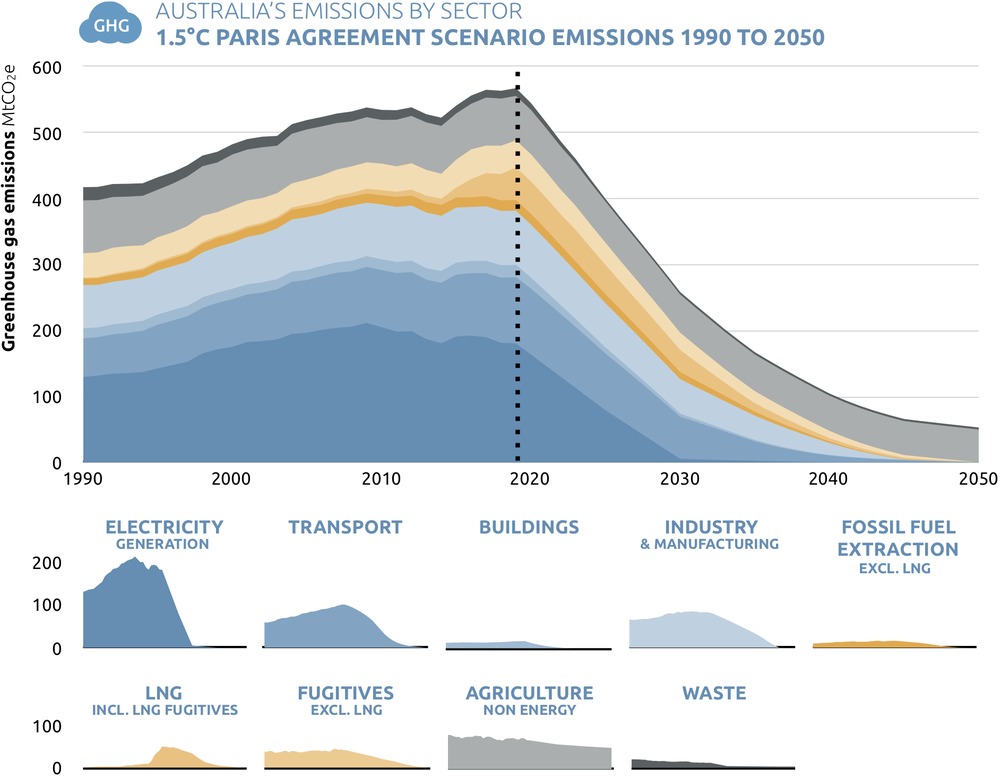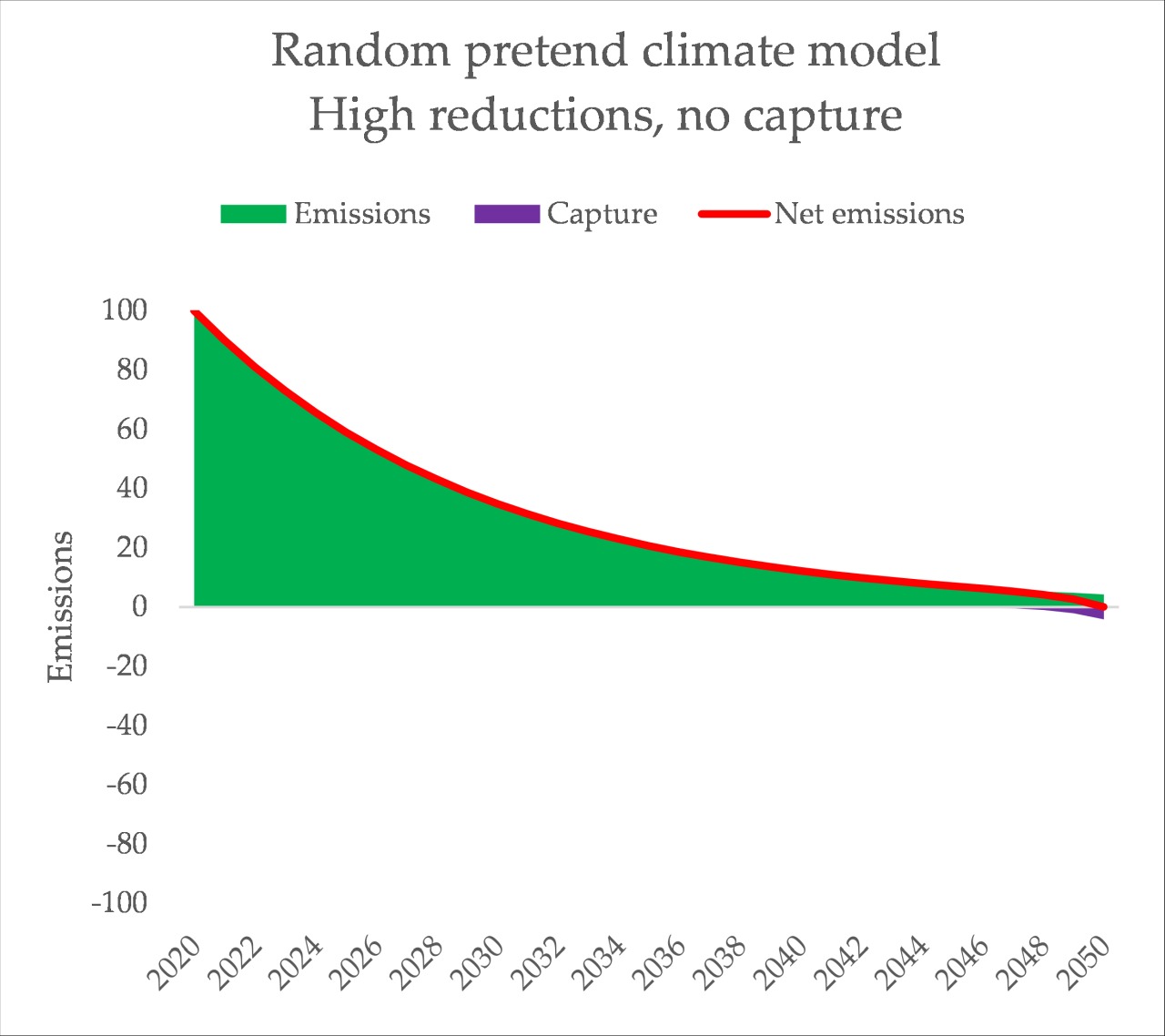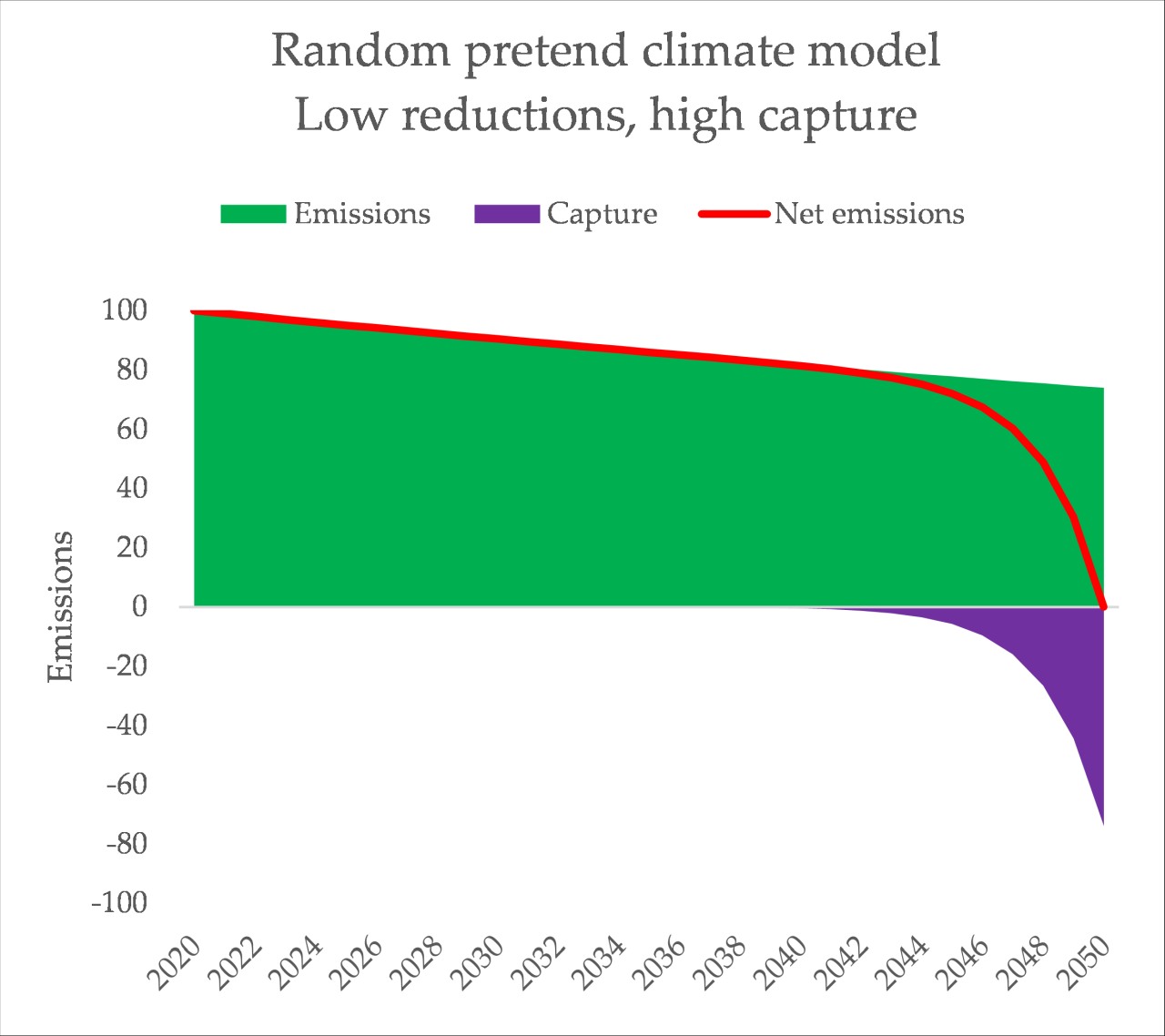Scott Morrison has said, tens of times this year, that he’d like to reach net zero emissions by 2050……’preferably’. Here’s the thing: when you prefer something to happen, you often act like you prefer it to happen.
I prefer to write this article with a delicious mug of lemonade by my side: that means I got up, walked to the fridge, opened it and poured it. I took actions that led to the outcome, instead of merely announcing to my wife and child that I would prefer it, and then continuing to sit at my desk blankly smirking at my screen.
WATCH: David Speers asks @MarisePayne to clarify whether the government has or will commit to net zero emissions by 2050 #Insiders #auspol pic.twitter.com/NSCnOvK6nV
— Insiders ABC (@InsidersABC) June 19, 2021
There has been a lot of commentary on one specific question around this: whether or not to drop the ‘preferably’, and change literally nothing else. In the AFR, the Conversation, the SMH, the Guardian. In Phillip Coorey’s AFR piece, there’s this:
“Mr Morrison has said repeatedly he would only commit to net zero if he could outline the technological advances to get there”
It’s important to note that this is a string of literal nonsense. Outline the technological advances? What? There are mountains of modelling, research, science, development and studies on this – many specifically for Australia. Why is a garbled collection of random words presented as if Mr Morrison has provided something useful or meaningful? What are the actual, real-world consequences for this statement?
Little snippets of pleaded gibberish completely dominate net-zero discourse. It’s worth returning to fundamentals with the net-zero concept, because one of the main reasons these climate policies become so deeply politicised is because they’re written about solely in that context, and with no thought paid to the real-world nature of fossil fuels and climate change.
Climate targets are about an immediate, physical emergency
Climate change is a real thing. It is not a political thing: the way the sun’s radiation is captured and withheld by our planet’s gaseous outer film does not respond to whether Michael McCormack is the leader of the Nationals, or Barnaby Joyce, or David Littleproud. The more greenhouse gases you add to the atmosphere, the worse the impacts we suffer. The less you add, the more we are saved from those harms. This is true today, and it is true in December 2049.
Earlier this year, Matt Canavan and Barnaby Joyce wrote that many of the politicians talking about a 2050 aspiration will be dead by that year. Michael McCormack has said he’s not worried about what happens in 30 years’ time. Aside from the stunningly callous admission of intergenerational harm, it’s also a reflection of their personal understanding of what the ‘net zero by 2050’ target entails: no change until the last minute.
That is not how it works in real life: the logical, least-cost, least-disruptive and safest pathway to achieving net zero emissions by 2050 is rapid action taken now – a global heave to push down on the rising curve, with as much strength as we, as a species, can muster – specifically to save ourselves from the painful consequences of fossil fuel reliance.
There are many illustrations of this, but I keep coming back to Climate Action Tracker’s simple and clear ‘Scaling up Australia‘ report, which splits out what changes are needed by sector, for Australia to align with the 1.5°C temperature goals of the Paris agreement, quite neatly:
See how there are still some emissions in the year 2050? That’s where the ‘net’ comes in – carbon removal, CCS and afforestation (‘nature based solutions’) are used in these models as absolute last resorts (because they’re so inherently uncertain and difficult), for really difficult-to-abate sectors like agriculture.
Net-zero targets have a complicated but fascinating origin story. It originated in the climate science, but naturally, in the real world has become increasingly fuzzier. Countries and companies have gravitated towards the inevitable loopholes and made their beds – expanding those loopholes rapidly such that they’ve, sadly, too often become the whole story. The recent ‘Taking Stock’ report outlines the fact that many net-zero targets adopted by countries, regions and cities are severely lacking. In defence of the concept, there are plenty of ways to provide pushback, and rescue the principle from the clutches of greenwashing and deception.
This global context is extremely important: it means Scott Morrison is likely to sign up to a net-zero target long after the greenwashing paint has begun to flake. Short-term targets, immediate actions and substance are increasingly becoming the key focus.
When Morrison does establish a net-zero target, it’ll be heralded as a major moment of significant progress towards climate action. We can say with total confidence that this will be utterly incorrect. In reality, it will simply be an update of the long-running project of defending Australia’s fossil-fuelled economy from any effort to reduce emissions. Australia will almost certainly adopt a net-zero target before COP26 this year: it will be a bad net zero target.
How the fudges could work
For an excellent, detailed and readable breakdown of the concept of net zero, I highly recommend the Climate Council’s Tim Baxter, who has done a five part series on this, starting here. I’ll be leaning on some of his work here. I’ve also had a preliminary dig into this, here. But I want to try and simplify some of this work into a few images and short sentences, because it’s really important to immunise yourself against this particular style of greenwashing / misinformation:
Backending – This seems extremely likely, based on Morrison’s recent remarks, presumably paraphrased from briefings he’s had from wonks. What is it? In Morrison’s own words (video here):
“..the trajectory to any net zero outcome is not linear, and anyone who thinks it is I think doesn’t get it. The way technology works is there is a long lead time into its development and commercialisation and once the technology is in place you can see a massive transformation. And so your achievement of net zero over time has more of that type of a curve, not that type of a curve. And if you think it’s linear, then that just doesn’t, that isn’t supported I think by the science or the research”
The ‘curve’ Morrison draws with his hands essentially shows the impact of technology ramping up very late, rather than very soon. The underlying philosophy here: it doesn’t matter how you get to net zero, as long as emissions in the year 2050 are zero, you’re sweet!
No, you are not. The problem here is the adding up of emissions over time, not a single point 30 years in the future. As I demonstrated in this post, this is just pure math: the area under the curve is the amount of climate harm caused over time. That is to say: Morrison’s hand is drawing the dark orange curve, with the highest emissions, and dismissing the dark grey curve, with the lowest emissions, up to 2050:
Delay the date – Australia needs to reach net zero emissions well before 2050, considering it has already emitted far above its ‘fair share’ of global emissions relative to population. But setting a date far later means short term action could be avoided:
Targeted exclusions – Australia’s emissions problem is made up of many parts, and simply shamelessly excluding some of these – such as agriculture or emissions from digging up fossil fuels – could be done. New Zealand effectively sets a weaker target for its agriculture sector, for instance. But agricultural really is hard to decarbonise – can the same be said about coal and gas mining?
This may have been building up for a while – the ‘Morrison Method’ of excluding Australia’s domestic emissions related to preparing fossil products for exports to other countries is a big clue.
Rely on removals – This involves barely changing fossil emissions at all, but assuming some massive influx of currently unknown carbon removal magic some time in the 2040s. Considering the government’s effort to turn ARENA into a CCS funding body, these wild assumptions will very likely feature.
This ties in neatly with Morrison’s hand-mimed promise of technology ‘kicking in’ at the very last minute. It also ties in with a major push to expand and solidify Australia’s growing carbon offsets market, will allow high-emitting companies to buy their way out of their climate responsibilities. Consider a good net zero pathway, which relies only slightly of removals, or a bad net zero pathway, which doesn’t change emissions barely at all, and relies on last-minute removals:
Without a net zero watchdog, an empty modelling stoush is on the way
In countries like the UK and New Zealand, climate targets are not just legislated but deeply analysed and considered by an independent government body. The UK’s process in particular is great, as it takes in a deliberative, community-focused and consultative approach to climate policy development. It is, currently, badly insufficient, but it is very much on the right track.
Independent MP Zali Steggall has been trying to get through a climate policy model like this for some time, but the government hasn’t been keen to sign on. Neither the Climate Change Authority or the Department of Industry has modelled a net zero pathway, but the Australian today reports “preliminary modelling” has been shown to Nationals MPs. That means something I predicted in May last year is coming true: Angus Taylor will use modelling by one of the big private firms to use the tricks above to present the preferred ‘pathway’ to net zero as the better one, and a faster pathway as a job-destroying, blackout-causing disaster – pre-empting any Labor policies that might see slightly more ambition in the shorter term.
Australia’s single clearest global climate function is figuring out ways to damage global climate agreements in such a way that adds another decade of fossil profits. From Kyoto’s land-use tricks, to the ‘carryover credits’, the story remains very specifically the same. All energy is dedicated to self-interest, rather than collective action. Net zero will be no different.
Domestically, the Nationals have set themselves up to be able to object to literally any climate policy of any kind, by protesting it on the grounds that it kills jobs and raises electricity bills. It does not matter who the leader is – the core philosophy of not reducing emissions at any rate beyond natural decay for at least the next decade will remain in place, and be held across both the Liberal and the National parties. This is just them posturing to ensure their own fudge-preferences get crammed into policy-making.
Climate action isn’t a political game. It is a fight to save our physical selves, and the physical selves of those around us, from danger and harm. The fossil fuel industry has been stunningly successful in Australia in pulling the levers so far, and they’ll be successful in shaping net zero such that it causes no change to emissions, at least not prior to the retirement ages of current executives and politicians.
As Joyce, Canavan and McCormack all openly declare – none will be alive when the consequences of today’s delay and pro-fossil policies manifest as destruction and danger. They are certainly acting like it.
















